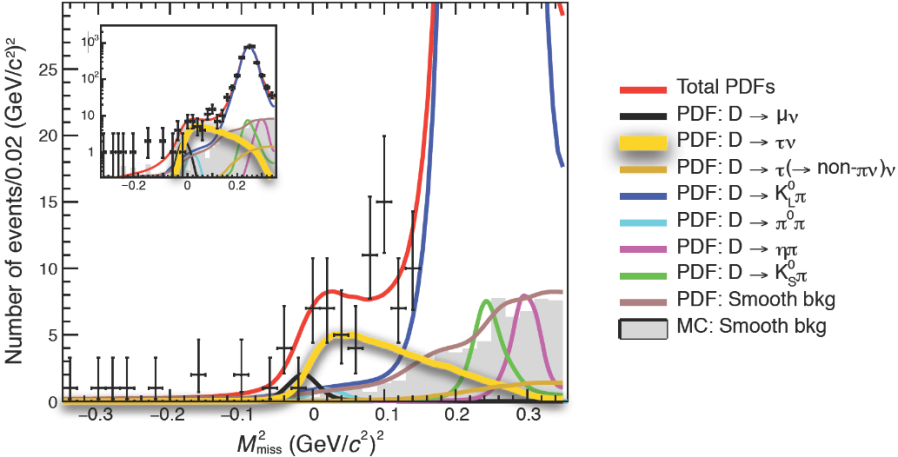

The BESIII collaboration has reported the world's first observation of the decay D+ → τ+ν in a newly published Physical Review Letters paper that has been highlighted by the journal as an "Editors' Suggestion.” This is the second type of pure leptonic decay of the D+ meson.
In the leptonic decay D+ → τ+ν, the c and d-bar quarks annihilate into a pair of charged and neutral leptons via a virtual W boson. BESIII's new measurement of D+ → τ+ν and previous results on D+ → μ+ν provide a clean test of the Standard Model assumption of “lepton universality” and a probe for New Physics.
This measurement was performed with the world's largest sample of charmed mesons ever produced in e+e- annihilations at a center-of-mass energy of 3.773 GeV, just above the threshold for production of DD-bar events. In 1.5 million tagged DD-bar pairs, 137 ± 27 signal D+ → τ+ν events were observed, with a statistical significance of more than 5 standard deviations (i.e., the probability that they are background fluctuation is less than 0.6 ppm). This translates into a branching fraction for D+ → τ +ν of (1.20 ± 0.27) × 10?3. Combining this result with the world-average branching fraction for D+→μ+ν (including a recent BESIII measurement), a ratio of 3.21 ± 0.65 was obtained, consistent with the Standard Model expectation of lepton flavor universality, 2.67, indicating that lepton flavor universality holds within the experimental uncertainty of this measurement.
“This comes just at the right time, when people started to question lepton universality,” said Professor Marek Karliner of Tel Aviv University after reading the BESIII paper.
While this first observation of D+ → τ+ν is a significant breakthrough, the new BESIII measurement is limited by statistics. Improved precision of this and many other charm measurements is a major goal for future BESIII runs and BEPCII accelerator upgrades.



Feynman diagram of the D+→τ+ν process (top left). A recording of D+→τ+ν by the BESIII detector (top right). The small peak close to zero in the bottom plot is the D+→τ+ν signal together with various background contributions (bottom).